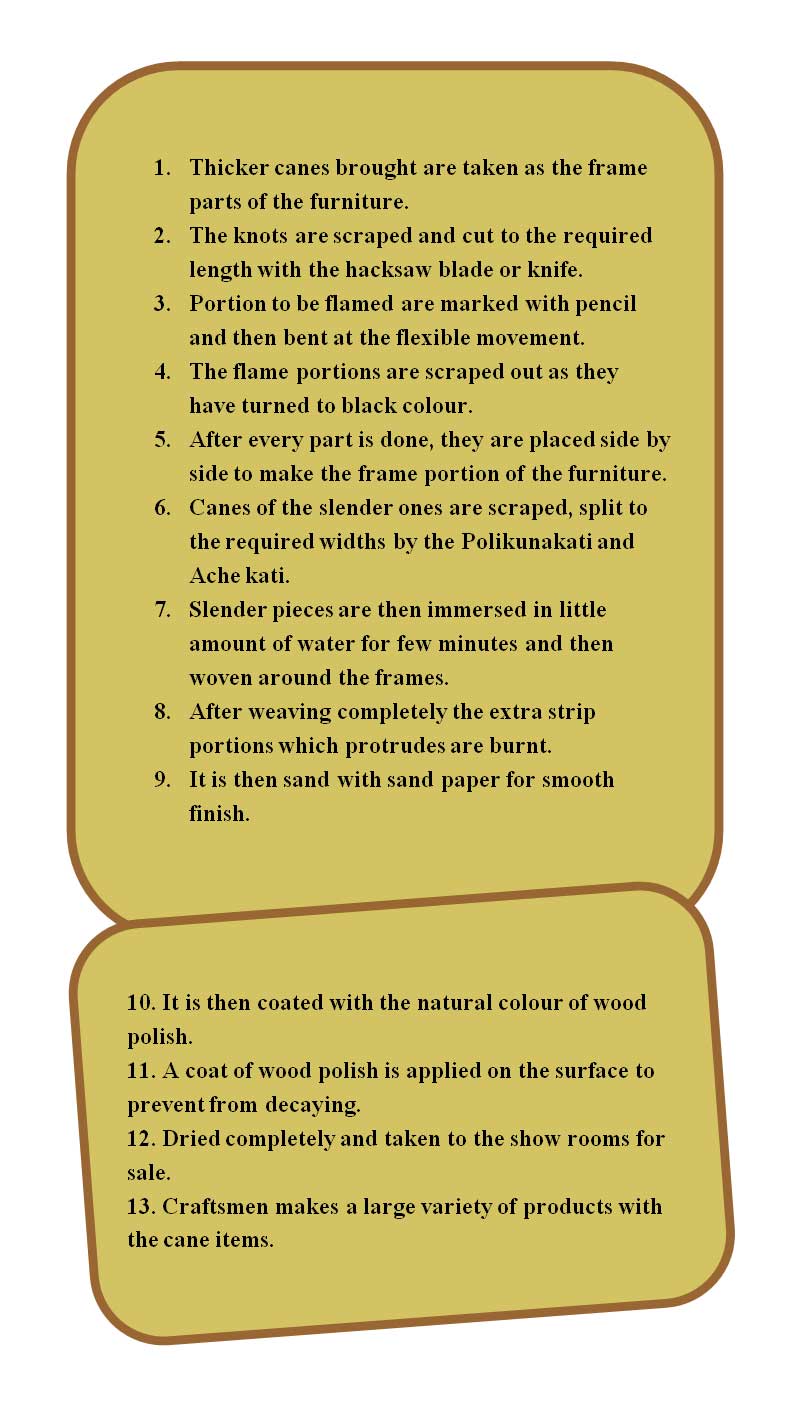Design Resource
Cane Furniture - Ernakulam, Kerala
Cane Article
by
The thicker canes brought from the Indonesia, Assam, Arunachal regions are generally taken for the frame parts of the furniture. Thicker canes are also made stands that is the outline of any structure to be made. The knots in the canes are scraped out and cut to the required lengths with the hacksaw blade or knife as per the article in mind to be made.
Cut sticks are then measured and marked with pencil, the portions to be flamed for bending. The portions marked are flamed by the gas propane torch and placed between the two poles, bent to the required portions as the cane is flexible at this movement. The flamed portions are then scraped out as those portions have turned black colour. After every part is done it is arranged side by side and then nailed to make the frame portions of the furniture.
After the frame part is completed, canes of the slender ones are scraped, split to the required widths by the Polikuna kati and then on the Aache kati. The slender pieces are dipped in little amount of water for few minutes and then woven around the frames by knotting in beginning and then weaving in plain, twill or hexagonal weaves as per the request of the customer. On wooden frames holes are made and the cane slender splits of the required widths are weaved, this is also another type of furniture that the craftsmen makes at Ernakulam.
Once the weaving of the slender strips are completed, it is then flamed throughout to burn the extra strip portions that protrudes out. It is then lightly sanded by the sand paper throughout. As most of the people prefer the natural colour wood polish is coated on the furniture for preventing it from decaying. Whenever there is a request of coloured furniture the available synthetic colours are applied and given to the customers.
The Craftsmen also makes baskets, showcase items etc. for which thinner canes are used to make the base and further woven throughout as per the required patterns for various end uses.
































